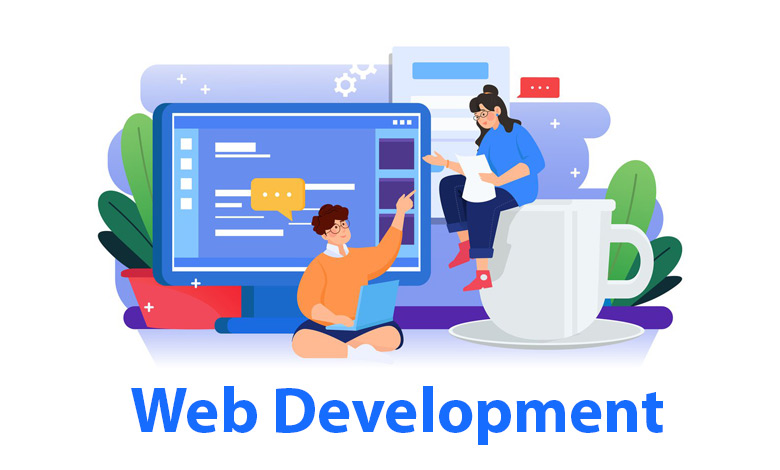Web Development

Are you planning to create/design a website? If yes, you might have heard about full stack web development. It is a comprehensive and pure approach that allows you to create a website from scratch. In this article, we will cover everything you need to know about full stack website development in modern technology, including its definition, benefits, technologies involved, and how to become a full stack web developer.
Table of Contents
Introduction to Full Stack Web Development
Full stack website development is a comprehensive approach that involves developing all layers and layout of a website, including the front-end, back-end, and database management.
A full stack webs developer is responsible for handling and manage all aspects of a website, from designing the user interface (UI) to creating the back-end infrastructure and handling the database.
Benefits of Full Stack Website Development
Full stack website development offers several benefits. For instance, it allows developers to create websites from scratch, providing them with more flexibility and control over the website’s functionality. Additionally, full stack web development enables developers to work on different layers based structure of a website, allowing them to identify and fix issues more easily.
Technologies Involved in Full Stack Website Development
Full stack website development involves several technologies, including front-end, back-end, and database technologies.
Front-End Technologies
Front-end technologies are responsible for creating the user interface (UI) of a website. Some popular front-end technologies include HTML, CSS, JavaScript, and jQuery. These technologies are used to design and develop the website’s layout, typography, and functionality. If you want to become a front end developer you have a strong knowledge of Adobe Photoshop, Illustrator as well as Figma and other designing tools.
Back-End Technologies
Back-end technologies are responsible for creating or developing the server-side infrastructure of a website. Some popular back-end technologies include PHP, Python, Ruby on Rails, and Node.js. These technologies are used to handle server-side logic, such as authentication, database integration, and handling requests from the front-end.
Database Technologies
Database technologies are responsible for managing and storing data used by a website. MySQL, MongoDB, and PostgreSQL are among the widely-used database technologies. These technologies are used to store, organize, and retrieve data from a website.
How to Become a Full Stack Web Developer?
A solid grasp of front-end and back-end technologies is essential to become a proficient full stack web developer. Some essential skills required for full stack web development include HTML, CSS, JavaScript, jQuery, PHP, Python, Ruby on Rails, Node.js, and database management. You have strong command on designing tools such as Adobe Photoshop, Adobe InDesign, Adobe illustrator and Figma, because these tools help you in UI of designing phase for website.
Step-by-Step Guide to Create a Full Stack Website
Creating a full stack website involves several steps. Here’s a step-by-step guide to create a full stack website.
Step 1: Planning
The first step is to plan your website. Work on the niche or type of website. This involves defining your website’s purpose, identifying your target audience, and creating a sitemap.
Step 2: Design
The next step is to design your website’s user interface UI. This involves creating wireframes and mockups to visualize your website’s layout and functionality.
Step 3: Front-End Development
The third step is to develop your website’s front-end. This involves using HTML, CSS, and JavaScript to create the website’s layout, design, and functionality.
Step 4: Back-End Development
The fourth step is to develop your website’s back-end infrastructure. This involves using back-end technologies such as PHP, Python, Ruby on Rails, or Node.js to handle server-side logic, integrate databases, and handle requests from the front-end.
Step 5: Database Design and Development
The fifth step is to design and develop your website’s database. This involves selecting a database technology such as MySQL, MongoDB, or PostgreSQL and creating a database schema to organize and store your website’s data.
Step 6: Testing and Debugging
The sixth step is to test and debug your website. This involves running tests on your website to ensure it functions properly and fixing any issues that arise.
Step 7: Deployment and Maintenance
The final step is to deploy your website and maintain it. This involves hosting your website on a server, managing updates and security, and monitoring its performance.
Common Mistakes to Avoid in Full Stack Website Development
Here are some common mistakes to avoid when developing a full stack website:
- Not planning adequately before starting development
- Neglecting the user interface design
- Not testing and debugging the website thoroughly
- Not optimizing the website for speed and performance
Conclusion
Full stack website development is a comprehensive approach that allows developers to create a website from scratch. It involves developing all layers of a website, including the front-end, back-end, and database. In order to excel as a full stack web developer, it’s crucial to possess a comprehensive understanding of both front-end and back-end technologies. Following the step-by-step guide, we provided can help you create a full stack website successfully.
FAQs
Full stack website development is an approach to web development that involves building all the layers of a website, including the front-end, back-end, and database, using a variety of technologies.
The benefits of full stack website development include having greater control over the entire development process, being able to build custom solutions to unique problems, and having a more comprehensive understanding of how websites work.
Technologies involved in full stack website development include HTML, CSS, JavaScript, front-end frameworks like React and Angular, back-end technologies like PHP, Python, Ruby on Rails, and Node.js, and database technologies like MySQL, MongoDB, and PostgreSQL.
A sound comprehension of both front-end and back-end technologies is a prerequisite to becoming a proficient full stack web developer. This can be achieved through online courses, coding bootcamps, and self-study.
Common mistakes to avoid in full stack website development include not adequately planning before starting development, neglecting user interface design, not thoroughly testing and debugging the website, and not optimizing the website for speed and performance.